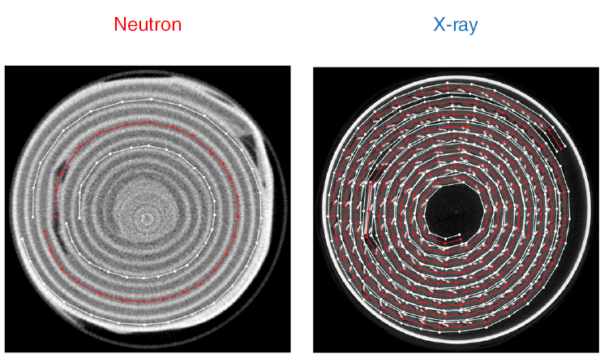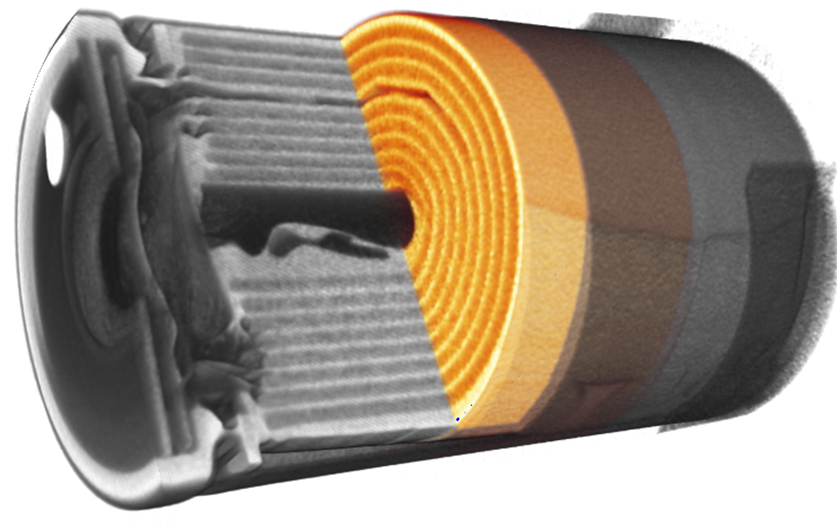Scientists led by U.K. electrochemical energy storage research body the Faraday Institution have combined sophisticated computer imaging and mathematical modeling to gain new insight into the workings of lithium batteries.
The researchers said their findings give a fuller understanding of how such batteries work and the specifics of several degradation mechanisms which affect performance over time.
The resulting research, published in Nature Communications, explains how the group used two complementary types of tomography – the use of a penetrating wave to create a representation of a cross-section through a solid object – to delve into the performance of a commercially available ‘CR2’ lithium-manganese oxide primary cell manufactured by Duracell.
Parchment study crossover
X-ray computed tomography proved most suitable for examining heavier elements such as manganese and nickel. The process enabled the group to detect mechanical degradation such as cracking and de-lamination in the electrode. The group observed manufacturing-related cracks in the cathode which expanded during discharge of the battery, due to lithium insertion.
The second imaging technique employed – neutron tomography – focused more on electrolyte chemistry and the transport of lithium ions through the device. “Neutron tomography made it possible to directly observe the migration of lithium ions and also to determine how the distribution of the electrolyte in the battery cell changes over time,” said Ingo Manke, tomography expert at the Helmholtz Zentrum Berlin research institute and a co-author of the paper.

Image: Faraday Institution
The group observed the tightly wound structure of the electrode made it difficult analyze so they employed a mathematical model to virtually ‘unroll’ the structure – using a technique adapted from one developed for historians to view scrolls or manuscripts too delicate to be physically unrolled. That method enabled the group to observe processes deep within the battery which would otherwise have been very difficult to spot.
Limitation
“These data present an example of the powerful insight that may be gained from 4D imaging,” reads the research paper. “The bulk properties that computational models were previously based on may now be replaced by spatially resolved, transient values … they would be able to provide a more accurate and comprehensive description of the practical operation, degradation and failure of a cell.”
The researchers noted their paper only included analysis of two very similar battery cells so the findings may not prove statistically significant. However, they said they are confident their method will pave the way to improvements in the design of cylindrical cells in various battery chemistries, and generally improve understanding of battery performance.
“The process we have developed gives us a unique tool for looking inside a battery during operation and analysing where and why performance losses occur,” added Manke. “This allows us to develop specific strategies for improving the design of wound batteries.”
This content is protected by copyright and may not be reused. If you want to cooperate with us and would like to reuse some of our content, please contact: editors@pv-magazine.com.




1 comment
By submitting this form you agree to pv magazine using your data for the purposes of publishing your comment.
Your personal data will only be disclosed or otherwise transmitted to third parties for the purposes of spam filtering or if this is necessary for technical maintenance of the website. Any other transfer to third parties will not take place unless this is justified on the basis of applicable data protection regulations or if pv magazine is legally obliged to do so.
You may revoke this consent at any time with effect for the future, in which case your personal data will be deleted immediately. Otherwise, your data will be deleted if pv magazine has processed your request or the purpose of data storage is fulfilled.
Further information on data privacy can be found in our Data Protection Policy.